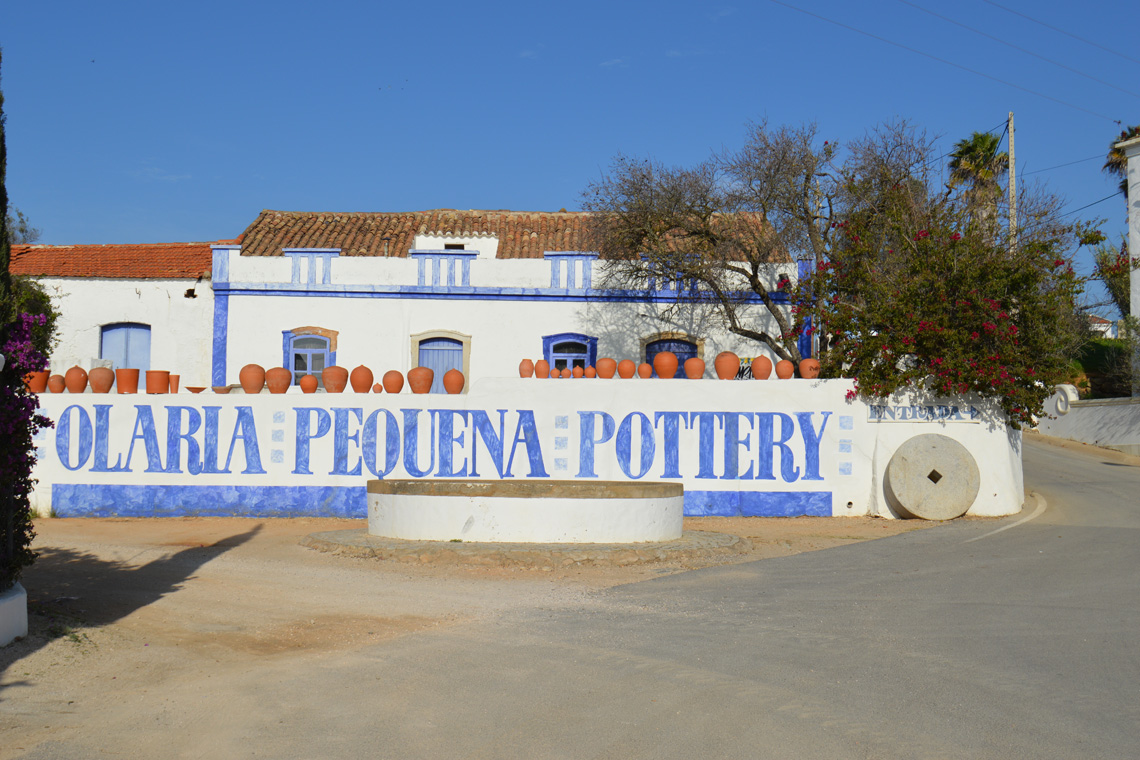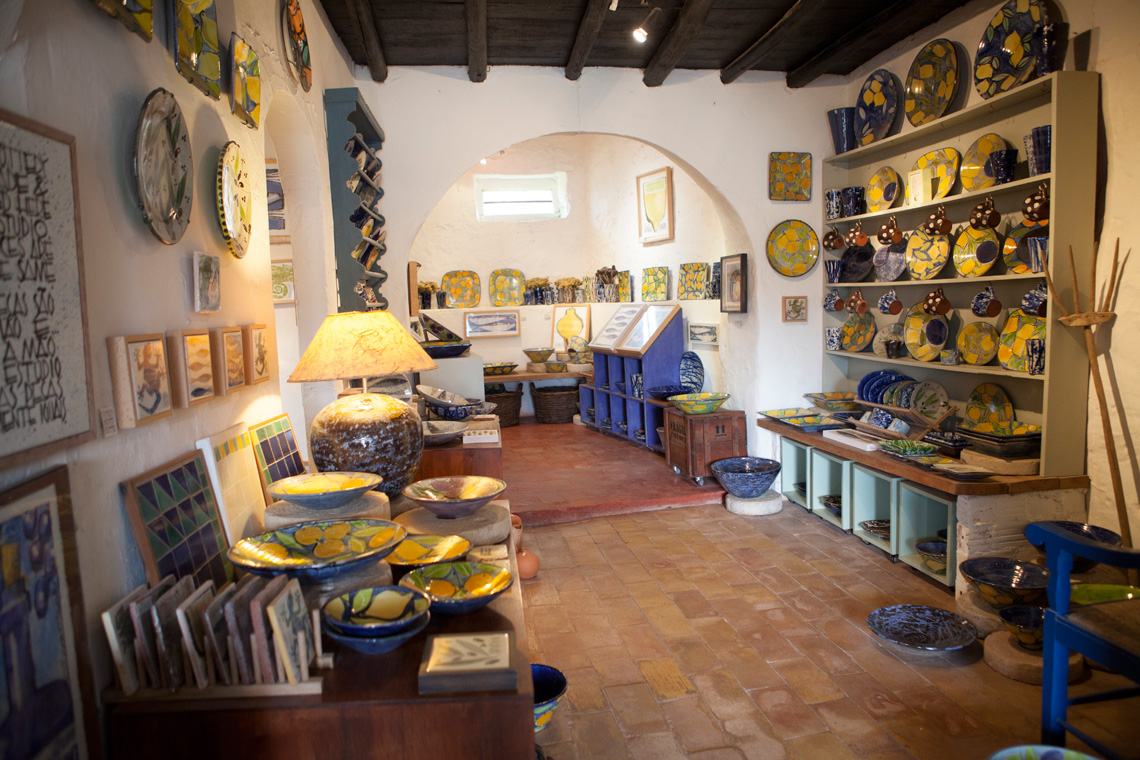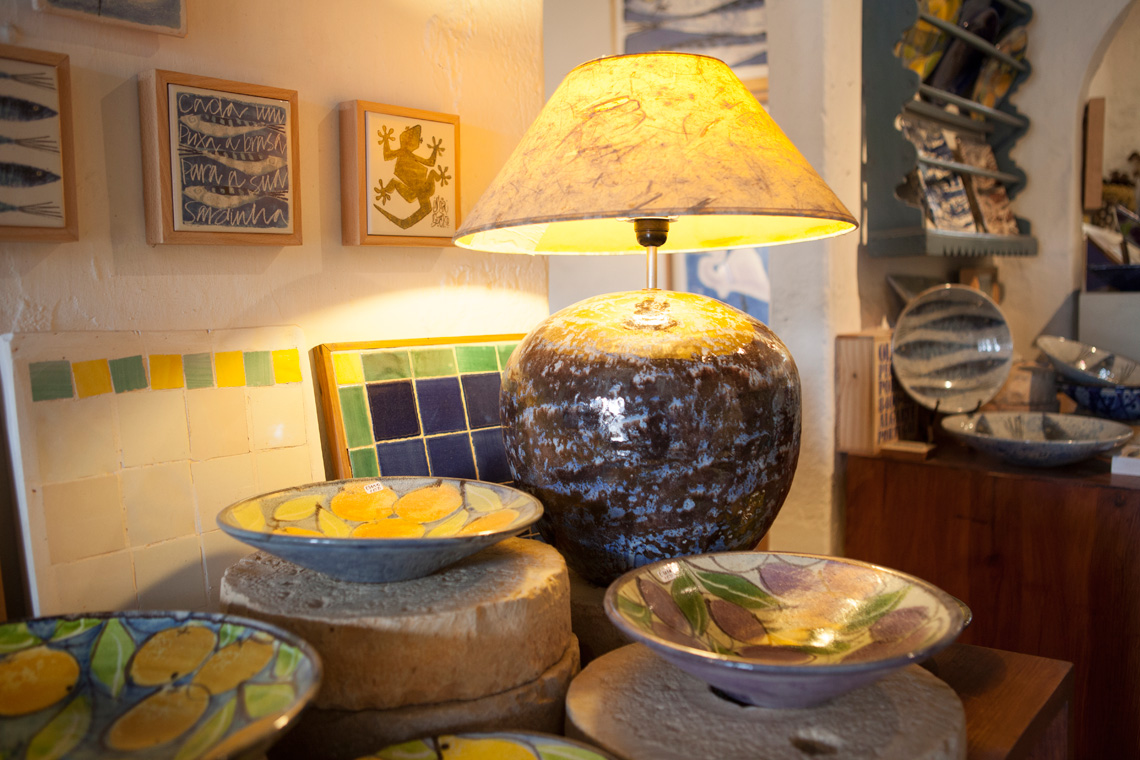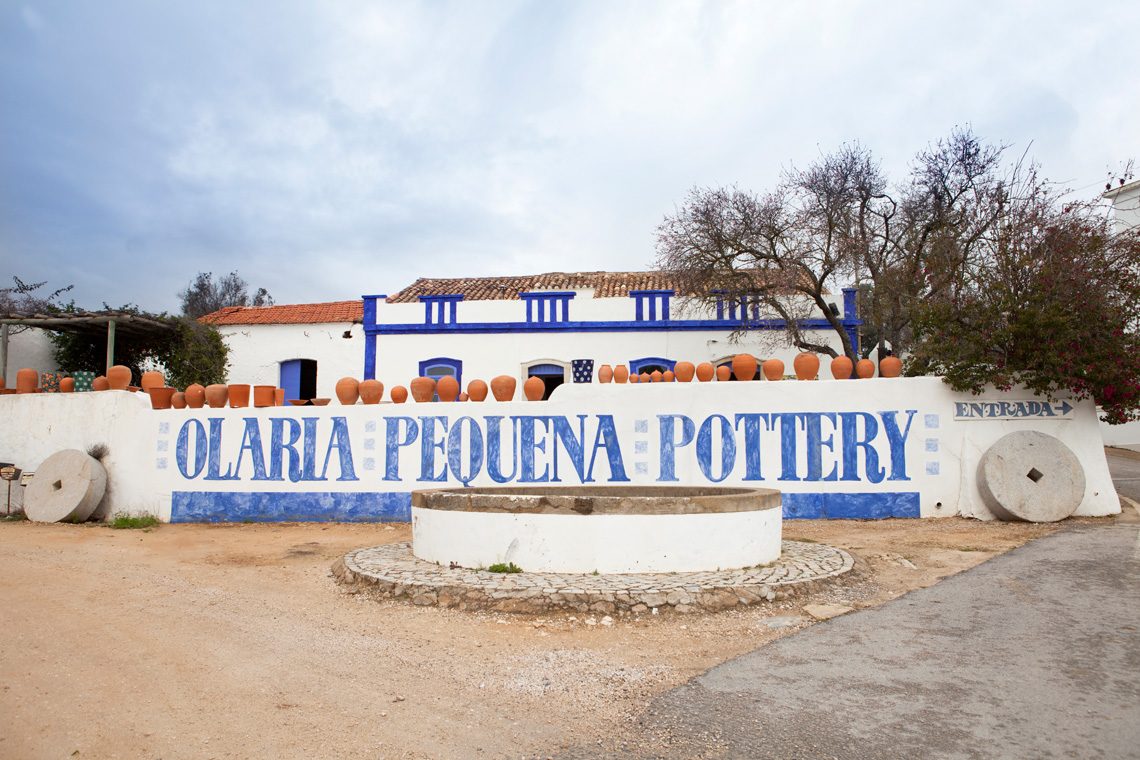04. Olaria de Porches – Olaria Pequena
Porches Pottery – The Little Pottery
Porches Pottery – The Little Pottery
Cronologia: Idade Contemporânea (Séc. XX)
Chronology: Contemporary Age (20th century)
Chronology: Contemporary Age (20th century)
É antiga a tradição oleira de Porches. Na envolvente de Lagoa sempre abundou o barro, sendo o sítio de “Barros Brancos” um dos locais mais procurados para a sua extração. Mas, apesar de não se saber com exatidão a quando remonta, pelo menos desde o último quartel do séc. XVIII que a regulamentação e taxação da atividade deixa antever a sua importância a par da cortiça. Nos anos 20 do século passado Lagoa tornava-se o grande centro oleiro da região algarvia. Em 1933, quando o emblemático oleiro Fernando Rodrigues nasceu, a indústria oleira estava na sua plenitude, e na década seguinte, o mestre Gregório, seu pai, era possuidor de uma das mais movimentadas oficinas de Lagoa. Nas feiras e mercados tem-se vindo a deixar de comercializar utensílios de barro. Restam agora os trabalhos de alguns e artistas e artífices que podem ser vistos e adquiridos em oficinas próprias e estabelecimentos de venda ao longo da EN125, como a Olaria Pequena, a Olaria Algarve, a Casa Grade ou a Casa Algarve, entre outros, e o fomento que a Escola de Artes de Lagoa tem vindo a promover.
The pottery tradition of Porches is quite old. In the surroundings of Lagoa, clay has always been abundant, and the “Barros Brancos” site is one of the most sought for its extraction. But, although we do not know exactly when it dates back, at least since the last quarter of the 18th century, that the regulation and taxation of the activity allowed us to foresee its importance along with cork. In the 1920s, Lagoa became the great pottery centre in the Algarve. In 1933, when the emblematic potter Fernando Rodrigues was born, the pottery industry was at its fullest, and in the following decade, the master Gregório, his father, owned one of the busiest workshops in Lagoa. In fairs and markets, clay utensils have been hardly put on sale. Now there is only the work of some artists and craftsmen who can be seen and acquired in their own workshops and sale outlets along the EN125, such as Olaria Pequena, Olaria Algarve, Casa Grade, or Casa Algarve, among others, and the stimulation the School of Arts of Lagoa has been promoting.




